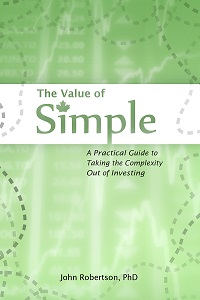Spare Tire
May 24th, 2009 by PotatoA question for the group: have you ever had to change a tire?
During the crazy North York construction boom I seemed to get a nail in my tire every other time I visited my parents, but those were all repaired fairly quickly without a blowout, and I could still drive (short distances) on them with only a slow leak. Only once, over ten years ago, did we have to try to cram a tire inside the fully-loaded van, and it was actually the spare (it was mounted to the underside of the van, and the cable holding it in snapped after going over a gorge in the road so large it can only be described as scenic).
While a flat tire is a relatively common cause of side-of-the-road breakdowns in cars, and also relatively easy to fix yourself and continue on your way, it is a rare event (since side-of-the-road breakdowns are uncommon, so even the most common version of that is still rare), and seems to be an increasingly rare event (perhaps a combination of better tires and better roads). Since gas hit $1/L last year, more people seem to run out of gas trying to avoid fillups than are sidelined by flats. Having a spare though is a nice safety blanket, especially when travelling far out of the city where you might be faced with a several-hour-long wait for a tow truck to arrive, or worse yet, no cell phone reception. Even then, many people still wouldn’t change their own tire (and here I’ll stereotype and say that this group would largely consist of women and the elderly). For most of our driving though, we’re hauling around something like 50 lbs of tire and tools for an event that is very likely not to happen in the car’s lifetime. That’s an extra small suitcase worth of space one could use in the trunk (and believe me, Wayfare would find a way to use that space).
A more useful emergency gizmo that maybe should come with all cars, and that I have had to use a few times before, is the eliminator jump kit (with a 110-V AC inverter for extra convenience) — though just regular jumper cables should suffice for most cars. Rather than a road hazard, pure forgetfulness with the lights (or a door left open after some stupid thief broke in) can drain the battery. Of course, a dead battery isn’t going to stop you in the middle of nowhere unless you’ve stopped by the side of the road and made the mistake of turning your car off.
Spread across everyone, some measurable benefits in terms of fuel consumption could be had from ditching the spares (both from the weight reduction and the extra attention we’d pay to our regular tires without that safety net), but on an individual level I doubt you’d ever be able to notice the marginal change in your own car’s consumption (the extra cargo space would be a more likely benefit). Compact spares have been the norm for some time now, and a few models have tried to ditch them entirely (in favour of a can of fix-a-flat, a pump, and a 1-800 number) — the automotive press tends to frown on this move, though I doubt most owners would notice the lack.
Personally, I’m tempted to take the spare out now, and only put it back in for trips to cottage country. I could then put the eliminator and washer fluid in the void left by the spare, saving me from having that rolling all around. Of course, then I have to put a tire somewhere in the house and remember to replace it when I might be more likely to need it, which sounds like too much of a pain to bother.


 Questrade: use QPass 356624159378948
Questrade: use QPass 356624159378948 Passiv is a tool that can connect to your Questrade account and make it easier to track and rebalance your portfolio, including the ability to make one-click trades.
Passiv is a tool that can connect to your Questrade account and make it easier to track and rebalance your portfolio, including the ability to make one-click trades.